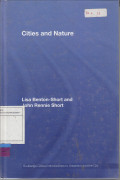
Cities and Nature
The book is organized around three central themes: 1) urban environment in his- torical context; 2) issues in urban-nature relations and: 3) realigning urban- nature relations. It discusses ideas s…
- Edisi
- Ed. 1, Cet. 1
- ISBN/ISSN
- 978-0-415-35588-9
- Deskripsi Fisik
- ix, 281 hal.: ilus.; 16 x 24 cm.; indeks.
- Judul Seri
- -
- No. Panggil
- 307.76 BEN c
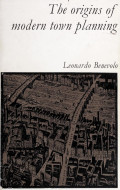
The Origins of Modern Town Planning
The aim of this book is, primarily, to emphasize the two-fold origin, technical and ideological, of these experiments, and to provide a reconstruction of the two factors which inspired the first re…
- Edisi
- Ed. 1, Cet. 1
- ISBN/ISSN
- 262-02062-9
- Deskripsi Fisik
- xiv, 170 hal.; ilus.; 14,5 x 22 cm.; indeks.
- Judul Seri
- -
- No. Panggil
- 711.4 BEN o
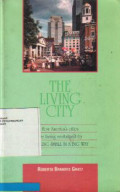
The Living City: How America's Cities are Being Revitalized by Thinking Small…
City, town, and neighborhood are important things for everyone. They are not changed by anything. Therefore, many people proclaim the goal of wanting to save their cities. People who have the best …
- Edisi
- Ed. 1, Cet. 4
- ISBN/ISSN
- 0-89133-246-4
- Deskripsi Fisik
- xxxiii, 414 hal.; 15 x 24 cm.; indeks.
- Judul Seri
- -
- No. Panggil
- 711.4 GRA t
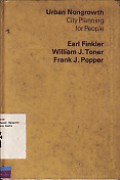
Urban Nongrowth: City Planning for People
This book is a joint product, completed in December 1975. Each of us participated in developing its ideas and reworking its drafts. Nonetheless, each of us also had primary responsibility for writi…
- Edisi
- Ed. 1, Cet. 1
- ISBN/ISSN
- 0-275-02230-7
- Deskripsi Fisik
- ix, 228 hal.; ilus.; 16 x 23 cm.; indeks.
- Judul Seri
- -
- No. Panggil
- 711.4 FIN u

Urban Regions: Ecology and Planning Beyond the City
Natural systems and their human uses are of central importance in urban regions, where diverse greenspaces and built spaces of essentially equal value spatially intertwine. With land planning, soci…
- Edisi
- Ed. 1, Cet. 1
- ISBN/ISSN
- 978-0-521-67076-0
- Deskripsi Fisik
- xxii, 408 hal.; ilus.; 17,5 x 24,8 cm.; indeks.
- Judul Seri
- -
- No. Panggil
- 711.4 FOR u
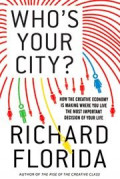
Who's Your City?: How the Creative Economy is Making Where to Live the Most I…
Place is not only important, it's more important than ever. In fact, choosing a place to live is as important to our happiness as choosing a spouse or career. And some regions, recent surveys show,…
- Edisi
- Ed. 1, Cet. 10
- ISBN/ISSN
- 978-0-465-01809-3
- Deskripsi Fisik
- viii, 374 hal.; ilus.; 15,5 x 23 cm.; indeks.
- Judul Seri
- -
- No. Panggil
- 711.4 FLO w

African Metropolis : Nairobi's Self-Help City
“African Metropolis: Nairobi’s Self-help City” by Andrew Hake is a comprehensive monograph that explores the growth and transformation of self-help initiatives in Nairobi. Published in 1977, …
- Edisi
- Ed. 1, Cet. 1
- ISBN/ISSN
- 0-85621-066-8
- Deskripsi Fisik
- 284 hal.; ilus.; 14 x 22,2 cm.; indeks
- Judul Seri
- -
- No. Panggil
- 711.15 HAK a

Mastering Metropolis: Planning the Future of the New York Region
The book is an authorized account of the findings from the Committee on the Regional Plan of New York and Its Environs, summarizing the key points from the ten volumes published by the Committee. I…
- Edisi
- Ed. 1, Cet. 1
- ISBN/ISSN
- -
- Deskripsi Fisik
- xvi, 302 hal.; ilus.; 15,5 x 22 cm.; indeks.
- Judul Seri
- -
- No. Panggil
- 711.15 DUF m

Urban Future for the Future
It looks like you’re referring to the book “Urban Structures for the Future” by Justus Dahinden. This book, originally published in 1972, explores innovative concepts in city planning and urb…
- Edisi
- Ed. 1, Cet. 1
- ISBN/ISSN
- 0-269-028021
- Deskripsi Fisik
- 220 hal.; ilus.; 22,5 x 26 cm.
- Judul Seri
- -
- No. Panggil
- 711.4 DAH u

New Towns: The British Experience
“New Towns: The British Experience” is a book edited by Hazel Evans, first published in 1972. This book compiles essays and papers presented at a conference organized by the Town and Country Pl…
- Edisi
- Ed. 1, Cet. 1
- ISBN/ISSN
- 85314-135-5
- Deskripsi Fisik
- xii, 196 hal.; ilus.; 15,5 x 23,5 cm.; indeks
- Judul Seri
- -
- No. Panggil
- 711.4 EVA n
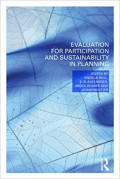
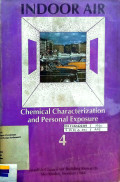

 Karya Umum
Karya Umum  Filsafat
Filsafat  Agama
Agama  Ilmu-ilmu Sosial
Ilmu-ilmu Sosial  Bahasa
Bahasa  Ilmu-ilmu Murni
Ilmu-ilmu Murni  Ilmu-ilmu Terapan
Ilmu-ilmu Terapan  Kesenian, Hiburan, dan Olahraga
Kesenian, Hiburan, dan Olahraga  Kesusastraan
Kesusastraan  Geografi dan Sejarah
Geografi dan Sejarah